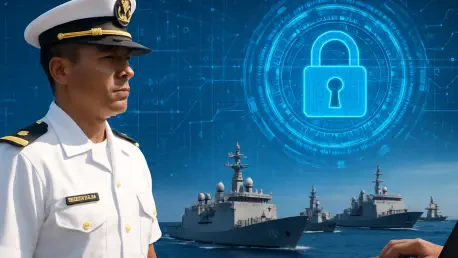In a bold move to address the escalating challenges of national security in an era of multifaceted threats, the Mexican government has introduced a transformative proposal to redefine the role of the Mexican Navy, known as SEMAR, through a comprehensive reform to the Organic Law of the Navy. This initiative, presented as a bill submitted to the Chamber of Deputies, seeks to expand the institution’s authority across critical domains such as customs, ports, airports, and even cyberspace. With a complex security landscape marked by both traditional and digital dangers, the reform aims to provide a robust legal framework that aligns with the Navy’s evolving operational demands. Spanning over 100 articles, this proposal not only consolidates existing powers but also charts new territories of responsibility, signaling a strategic shift toward modernization and a broader vision for safeguarding the nation’s sovereignty.
Strengthening Operational Scope
Enhancing Maritime and Territorial Control
The proposed reform significantly broadens the operational reach of SEMAR, building on prior presidential decrees that transferred control of maritime and inland customs to the Navy. This legal overhaul aims to cement these responsibilities permanently, ensuring the Navy’s role in curbing corruption and smuggling across territorial waters, coastal zones, and associated airspace. Beyond maritime domains, the initiative extends authority to airport security through specialized Naval Airport Protection Units, designed to support civilian authorities in maintaining safety. Additionally, the reform strengthens SEMAR’s capacity to combat illicit activities by granting rights of visit and pursuit within Mexico’s Exclusive Economic Zone and on the high seas, aligning with international legal standards. This expansion underscores a commitment to protecting national sovereignty against both internal and external threats, positioning the Navy as a pivotal player in a multi-dimensional security framework.
Securing Airports and Beyond
Another critical facet of this legislative proposal is the formal integration of airport security into the Navy’s mandate, a move that reflects the growing need for coordinated efforts in high-risk areas. The establishment of dedicated units to assist in safeguarding airports highlights the recognition of these locations as potential targets for criminal activities, necessitating military precision and oversight. Furthermore, the reform extends beyond physical spaces to address broader territorial concerns, ensuring that SEMAR’s presence is felt in safeguarding national interests across diverse environments. This comprehensive approach not only enhances security at key infrastructure points but also fosters collaboration between military and civilian entities, creating a seamless defense network. By embedding these responsibilities into law, the initiative aims to eliminate ambiguities and provide clarity on the Navy’s role in protecting vital national assets from emerging threats.
Advancing Technological and Structural Modernization
Tackling Cybersecurity Challenges
As digital threats continue to proliferate, with billions of cyberattack attempts reported in recent data from the Ministry of Security and Citizen Protection (SSPC), the reform places cybersecurity at the forefront of SEMAR’s mission. The proposal authorizes the Navy to conduct military operations in cyberspace, leveraging advanced technologies such as artificial intelligence to defend critical national infrastructure. This marks a significant shift toward recognizing cyberspace as an invisible yet vital battlefield where national security is increasingly contested. Collaboration with other authorities is emphasized to ensure a cohesive response to digital threats, reflecting an understanding that modern defense requires expertise across multiple domains. By embedding cybersecurity within the Navy’s legal framework, the reform positions SEMAR to counter sophisticated attacks that could undermine public safety and economic stability.
Reforming Command and Institutional Priorities
Institutional modernization forms a cornerstone of this legislative effort, with structural changes aimed at enhancing operational efficiency. The introduction of the Strategic Chief Commander role, replacing the former Head of Naval Operations, is designed to streamline decision-making under the President’s Supreme Command and SEMAR’s High Command. Additionally, the reform redefines the Navy’s mission by eliminating outdated objectives and focusing on contemporary threats, both external and specialized. A progressive highlight is the explicit commitment to gender equality, ensuring that personnel of any gender can hold command positions at all levels. This move not only modernizes the institution but also aligns it with broader societal values of inclusivity. By addressing these structural and cultural aspects, the proposal seeks to create a more agile and forward-thinking Navy, equipped to navigate the complexities of today’s security environment.
Reflecting on a Comprehensive Security Vision
Aligning with National Strategies
Looking back, the legislative push to expand SEMAR’s powers was deeply rooted in alignment with overarching national frameworks such as the National Development Plan and the National Maritime Policy. These strategies envisioned a unified National Maritime Authority under the Navy’s leadership, a vision that the reform sought to realize through legal codification. By integrating control over customs, ports, and airports, the initiative aimed to create a cohesive security apparatus capable of addressing diverse challenges. The emphasis on long-term planning was evident in how the reform tied SEMAR’s expanded role to national priorities, ensuring that security measures were not reactive but part of a strategic blueprint. This alignment was critical in reinforcing the Navy’s position as a central pillar of national defense.
Addressing Past Concerns with Future Solutions
Reflecting on the context, the reform also responded to past controversies surrounding naval operations, including allegations of involvement in fiscal schemes. While acknowledging these issues, the initiative prioritized forward-looking measures by closing legal and operational gaps to enhance accountability. The comprehensive scope of the proposal, with its focus on technological advancement and structural clarity, was intended to rebuild trust in SEMAR’s capabilities. By formalizing roles in cybersecurity and modernizing command structures, the reform addressed the need for transparency and effectiveness. Moving forward, the enactment of such a detailed framework could serve as a blueprint for other nations, integrating traditional military duties with modern imperatives. The commitment to readiness against both visible and invisible threats paves the way for a resilient future in national security.









